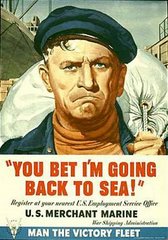Chief Mate/Master Management Program
Finally completed the 12 weeks of courses required to sit for the Chief Mate/Master license exam. I’m glad that it is done yet disappointed with what I got out of it.
I’m one of the fortunate ones. My employer, the Army Corps of Engineers, paid all tuition, room, meals, and travel related to the training. They also provided time off with pay to complete the courses. The price for selling my soul is a three year agreement to stay employed by the government. MMP offshore members have everything paid for also but must go on their own time. Other students paid for the training out of their own pocket or their companies paid. Almost all were there on their own time. None had as good a deal as those of us from the Corps.
The courses that were worth the money and time were the two weeks of Advanced Shiphandling which takes place on the simulator. Behind that was Advanced Meteorology, which I felt was relevant and useful. The other nine weeks were a complete waste of time.
Coming into the training, I had very high expectations. I heard rumors that these courses were aimed at experienced deck officers and that there would be new, advanced material to learn. I heard studying would be required and certificates would not be handouts as in other STCW training. I was wrong.
The material covered is old news for anyone that went to a maritime academy. Most exams were taken form the Coast Guard pool and have been seen on previous exams. After four and a half weeks, I finally came to the realization that I was there for the certificates, not to become a better mariner. It got to the point that a student in the ECDIS class didn’t bother to finish the written exam but turned it in as soon as he knew he had a 70% passing grade. Passing was all that mattered.
There is a phenomenon that is often seen in organizations but was perfected on a large scale at MITAGS. I call it the tower of blame, where there are lots of faults but no solutions with regards to the irrelevance of the courses. In this case it started with the instructor blaming the material provided by the school required to be covered in the course. Then the school said the courses could not be improved upon because they were Coast Guard approved and the Coast Guard approved the course because it covered the topics required by the IMO. DNV then audits the courses to ensure the material is covered as outlined in the course. It amazed me that so many organizations with intelligent people could come up with such crap.
One way the Coast Guard and the schools could make the courses worth the money and time is to allow the module covered be the equivalent of taking the test module at the Coast Guard exam center. In the way flashing light can be taken at an approved school and the certificate exempts you from having to take the flashing light test at the Coast Guard, completion of Advanced Stability should exempt you from the stability module of the Chief Mate exam.
The real benefit of the new course requirement is that it will thin the heard. Those not truly dedicated to going to sea will go shore side after a couple of years and those dedicated to sailing will find a way to get through the courses and advance their licenses’. While the obstacles become greater to maintain and upgrade Merchant Marine licenses, it is worth the effort. I wouldn’t want to work anywhere but on the water.






